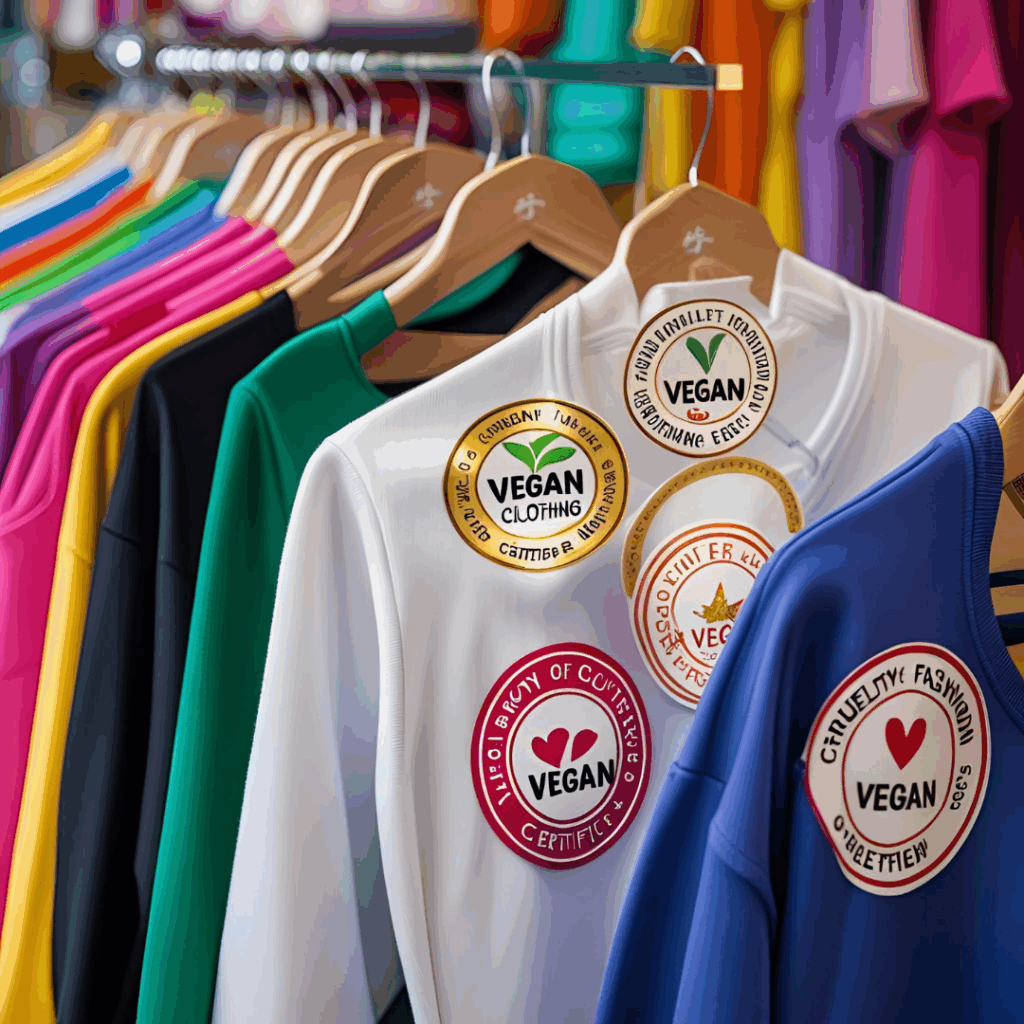Concern for animal rights and sustainability has deeply transformed the fashion industry. More and more consumers want to know where their clothes come from and whether the production process was cruelty-free. But how can you be sure that a brand or product truly respects this ethics?
The answer lies in cruelty-free certifications in the textile sector — trustworthy seals that guarantee no animals were exploited, tested on, or harmed throughout the production chain.
In this complete guide, you will discover:
- What cruelty-free means in fashion
- The most respected certifications worldwide
- How to identify truly cruelty-free products
- The impact of these certifications on brands and consumers
What does “cruelty-free” mean in the textile sector?
Cruelty-free literally means “free from cruelty.” In the context of fashion and textiles, the term refers to products that do not involve any form of animal suffering, from raw material sourcing to lab testing and commercialization.
This includes:
- Fabrics from plant-based, synthetic, or recycled origins
- No animal testing (in processes such as dyeing or finishing)
- Ethical and traceable production
- Alternatives to leather, wool, silk, and feathers
However, with greenwashing gaining momentum, it is not always easy to distinguish between a truly cruelty-free product and one that is not. That’s why recognizing reliable seals and certifications is so important.

Why are cruelty-free certifications important?
Certifications are powerful tools to ensure transparency. They standardize criteria, audit practices, and inform consumers, protecting them from misleading claims.
If a product has a recognized cruelty-free certification, it means it has undergone rigorous verification and meets international requirements.
Additionally, these certifications:
- Pressure companies to adopt more ethical practices
- Educate consumers about conscious production
- Contribute to more sustainable and compassionate fashion
The main cruelty-free certifications in the textile sector
Here are the most important seals to guarantee a garment is truly cruelty-free:
- PETA-Approved Vegan
Issued by: PETA (People for the Ethical Treatment of Animals)
Coverage: Worldwide
Focus: Vegan and cruelty-free fashion
This is one of the most recognized seals worldwide for fashion products. It certifies that:
- No animal-derived materials (leather, wool, silk, feathers, etc.) were used
- The entire production chain is vegan
- The brand commits to maintaining this policy
Example certified brands: Insecta Shoes (Brazil), Matt & Nat, Will’s Vegan Store
✅ Ideal for: clothing, footwear, bags, and accessories
- Leaping Bunny
Issued by: Coalition for Consumer Information on Cosmetics (CCIC)
Coverage: International
Focus: Animal testing
Although mainly used in the cosmetics industry, Leaping Bunny also covers fashion products involving chemical processes such as dyeing, resins, and waterproofing.
- Requires regular audits
- Ensures no ingredient or step in the process was tested on animals
- One of the strictest certifications worldwide
Examples in textiles: fabrics treated with softeners or chemical pigments
- Certified Vegan (Vegan Awareness Foundation)
Issued by: Vegan Action
Coverage: North America, Europe, and associated countries
Focus: Vegan and cruelty-free products
Unlike PETA’s seal, Certified Vegan requires no animal testing at any stage. It also prohibits animal-derived ingredients and demands documentary proof.
✅ Used by fashion, cosmetic, and food brands.
- The Vegan Society Trademark
Issued by: The Vegan Society (UK)
Coverage: Europe and member countries
Focus: Veganism across diverse products
This is the oldest vegan seal in the world, founded in 1944. To obtain it, a company must prove:
- No animal ingredients or byproducts
- No animal testing
- Clear traceability of every production step
Clothing, footwear, and even fabric suppliers have received this certification.
- Animal-Free Fashion (LAV)
Issued by: Lega Anti Vivisezione (Italy)
Coverage: Europe
Focus: Elimination of any animal raw materials in fashion
This seal has 4 levels (A to D), indicating the degree of absence of animal inputs. The criteria analyze leather, wool, fur, feathers, and silk.
- Level A = completely free of any animal-derived material
- Level D = still uses some animal input but in minimal percentage
✅ Useful for consumers seeking a conscious transition.

Other certifications that complement the cruelty-free concept
While not exclusively focused on animal welfare, some sustainability seals also contribute to ethical and cruelty-free production.
- Global Organic Textile Standard (GOTS)
Ensures organic textiles are grown and processed ethically and ecologically. Prohibits animal testing and animal-derived inputs in finishes. - OEKO-TEX® Standard 100
Main focus: chemical safety. Checks if the fabric is free from harmful substances. Certified fabrics often avoid animal testing. - B Corp
Assesses the social and environmental impact of companies overall. Many B Corp-certified companies are also cruelty-free, though this is not a strict requirement.
How to identify if a product is certified?
- Check the brand’s website: responsible brands usually display seals on product pages or in the “Sustainability” section.
- Consult official certification websites:
- PETA: https://www.peta.org
- Leaping Bunny: https://www.leapingbunny.org
- Vegan Society: https://www.vegansociety.com
These platforms usually have searchable databases of approved brands.
- Be wary of vague terms:
Phrases like “eco-friendly,” “natural,” “sustainable,” or “conscious” do not guarantee cruelty-free status.
The impact of cruelty-free certifications in fashion
For consumers:
- Safety and confidence in purchases
- Clarity about brand values
- Active participation in building a fairer world
For brands:
- Competitive differentiation
- Increased customer loyalty
- Access to new markets (especially Europe and North America)
Cruelty-free certifications are essential for ethical fashion
Choosing products with cruelty-free certifications in the textile sector is an act of empathy, awareness, and responsibility. These seals are not just pretty stickers; they represent real commitments to animals and the planet.
By learning to recognize these certifications, you become a more informed consumer and help shape a future where fashion is truly free — free from cruelty, exploitation, and irreversible harm.
💬 Have you ever bought a cruelty-free certified piece? Share your experience in the comments!
🔁 Share this post with someone starting their journey toward more ethical consumption







